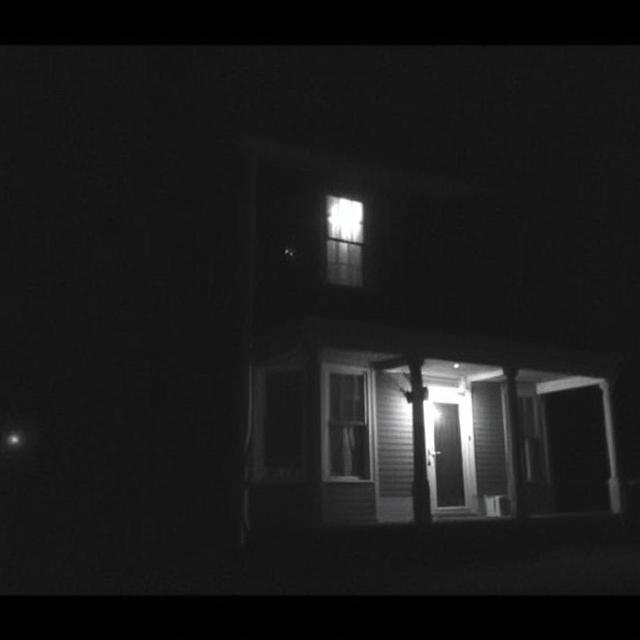The city of Austin, Texas, known for its vibrant music scene and laid-back atmosphere, was forever scarred by a brutal crime that unfolded on the night of December 6, 1991. Four young girls – Amy Ayers, Eliza Thomas, Jennifer Harbison, and Sarah Harbison – were found murdered inside a TCBY Yogurt Shop on West Anderson Lane. The horrific nature of their deaths, the lack of a definitive motive, and the subsequent mishandling of the investigation have transformed this case into one of Austin’s most infamous and enduring unsolved mysteries, leaving a community grappling with grief and a persistent yearning for closure that remains elusive even decades later.
The victims were vibrant young women with their whole lives ahead of them:
- Amy Ayers, 13, was described as a sweet and responsible young teenager who was working at the yogurt shop that night.
- Eliza Thomas, 17, was a bright and artistic high school student and a fellow employee at TCBY.
- Jennifer Harbison, 17, was a popular and outgoing high school student who was working alongside her younger sister.
- Sarah Harbison, 15, was Jennifer’s younger sister, also employed at the yogurt shop.
On that fateful Friday night, the four girls were closing up the yogurt shop. Sometime after 10:00 PM, a fire was reported at the location. When firefighters arrived, they extinguished the blaze and made the gruesome discovery of the four teenagers’ bodies inside. They had all been bound, gagged, and shot execution-style. The scene was one of utter horror, leaving investigators and the community reeling.
The initial investigation was plagued by missteps and inconsistencies that would haunt the case for years to come. The crime scene was not properly secured, allowing for potential contamination. Key pieces of evidence were seemingly overlooked or mishandled. The focus of the investigation appeared to shift erratically, leading to a sense of disarray and a lack of clear direction.
In the years that followed, numerous suspects were identified and investigated, but none were ever conclusively linked to the murders. The lack of strong physical evidence and reliable eyewitness accounts hampered the efforts of law enforcement. The case became a symbol of frustration for the Austin Police Department and a source of deep pain for the victims’ families and the wider community.
One of the earliest and most controversial suspects was Robert Springsteen IV. In 1999, Springsteen, who had a history of violent crime, was arrested in connection with a separate murder. During questioning, his name surfaced in connection with the Yogurt Shop Murders. Based largely on a confession that Springsteen later recanted, he and another man, Michael Scott, were indicted for the crime in 2001.
However, the case against Springsteen and Scott was fraught with issues. The confession was obtained after hours of interrogation, and both men claimed they were coerced. Crucially, DNA evidence found at the crime scene did not match either Springsteen or Scott. In 2009, both men were released after their convictions were overturned due to the lack of compelling evidence.
The handling of the DNA evidence became a significant point of contention. Semen was found at the scene, but initial testing failed to yield a conclusive match to any known individuals. Years later, advancements in DNA technology allowed for further testing, but the results remained inconclusive regarding Springsteen and Scott. The actual source of the DNA remains unknown, a critical piece of the puzzle that continues to elude investigators.
Over the decades, the Yogurt Shop Murders have remained a cold case, a constant source of anguish for the families and a blemish on the city’s sense of security. The lack of closure has allowed theories and speculation to proliferate, further complicating the search for truth.
Some theories have focused on local criminals with a history of violence, while others have explored the possibility of a transient individual passing through Austin at the time. The fact that the victims were young and seemingly targeted has also led to speculation about the motive, ranging from robbery gone wrong to a more sinister and sexually motivated crime.
The mishandling of the initial investigation has been a significant obstacle to solving the case. The lost or contaminated evidence, the shifting focus of the investigation, and the reliance on a disputed confession have all contributed to the lack of a definitive breakthrough.
In recent years, there have been renewed efforts to solve the Yogurt Shop Murders. Advances in forensic technology and the emergence of new leads have provided glimmers of hope that justice might still be possible. However, the passage of time and the deterioration of some evidence present ongoing challenges.
The families of Amy Ayers, Eliza Thomas, Jennifer Harbison, and Sarah Harbison have shown incredible resilience in their decades-long pursuit of justice. They have tirelessly advocated for continued investigation, keeping the memory of their loved ones alive and pressing for answers. Their unwavering determination serves as a poignant reminder of the human cost of unsolved crime.
The Yogurt Shop Murders remain a stark example of how a horrific crime can leave a lasting scar on a community. The image of those four young girls, their lives tragically cut short in such a brutal manner, continues to haunt Austin. The case underscores the importance of meticulous and thorough investigation from the outset and the enduring pain of families left without closure. The search for the truth behind the Yogurt Shop Murders continues, a frozen moment in time that the city of Austin desperately hopes will one day thaw and reveal the answers that have remained elusive for so long.
Want to explore the shadows even deeper? For more chilling cases like this, visit SinisterArchive.com, where the legends are real.




